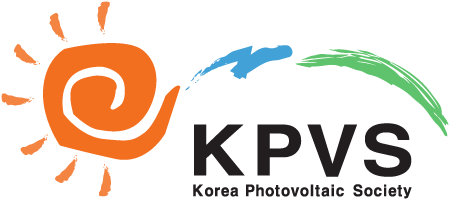-

-
Surface Passivation for Enhanced Performance and Stability of CsPbI3 Perovskite Quantum Dot Indoor Photovoltaics
CsPbI3 페로브스카이트 양자점 실내 광전지의 성능 및 안정성 향상을 위한 표면 패시베이션 연구
-
Seon Joong Kim, Jae Won Shim
김선중, 심재원
- This study investigates the effect of (2-(3,6-Dibromo-9H-carbazol-9-yl) ethyl) phosphonic acid (Br-2PACz) passivation on the performance and stability of CsPbI3 PQD-based photovoltaics (PV) …
- This study investigates the effect of (2-(3,6-Dibromo-9H-carbazol-9-yl) ethyl) phosphonic acid (Br-2PACz) passivation on the performance and stability of CsPbI3 PQD-based photovoltaics (PV) for indoor applications. Devices with Br-2PACz passivation exhibited improved PCE, VOC, and FF under FL 1,000 lux conditions, attributed to reduced surface traps and suppressed charge recombination. Additionally, the decrease in trap density and enhanced moisture stability significantly improved long-term reliability. Specifically, the carbazole structure in Br-2PACz enhanced resistance to moisture, allowing the device to retain over 80% of its initial efficiency after six days at 20~30% relative humidity. These findings suggest that Br-2PACz passivation is a promising approach to boost both performance and durability for PQD-based PV systems in low-light indoor environments. - COLLAPSE
-
Surface Passivation for Enhanced Performance and Stability of CsPbI3 Perovskite Quantum Dot Indoor Photovoltaics
-

-
Enhancing Performance in 1.8 eV Wide Bandgap Perovskite Solar Cells via Interface Design between Hole Transport Layer and Perovskite
정공 수송층과 페로브스카이트 계면 설계를 통한 1.8 eV 넓은 밴드갭 페로브스카이트 태양전지 성능 향상
-
Jung Jun Kim, Joo Woong Yoon, Jae Ryoung Lee, Seok Beom Kang, Ayoung Lee, Sang Jun Park, Dong Hoe Kim
김정준, 윤주웅, 이재룡, 강석범, 이아영, 박상준, 김동회
- Wide bandgap (1.8 eV) perovskite solar cells are essential for realizing high-efficiency perovskite-perovskite tandem solar cells. However, a key performance bottleneck for …
- Wide bandgap (1.8 eV) perovskite solar cells are essential for realizing high-efficiency perovskite-perovskite tandem solar cells. However, a key performance bottleneck for these wide bandgap perovskite solar cells is the mismatch at the interface between the hole transport layer (HTL) and perovskite, which causes non-radiative recombination and energy band misalignment. To achieve high efficiency, it is crucial to ensure effective energy level alignment and low hydrophobicity at the HTL/perovskite interface. To address these challenges, a PTAA/Me-4PACz bilayer HTL structure was employed, enhancing interfacial compatibility and promoting uniform perovskite film formation. Scanning electron microscopy (SEM) and X-ray diffraction (XRD) analyses revealed that this bilayer structure induces large grain growth and improves crystallinity in the perovskite film, thereby reducing non-radiative recombination. Devices with this bilayer HTL achieved an impressive open-circuit voltage (VOC) of 1.26 V and a power conversion efficiency (PCE) of 17.62%, while also showing reduced hysteresis compared to single-layer HTLs. These findings demonstrate that the PTAA/Me-4PACz bilayer is an effective strategy for advancing wide bandgap perovskite solar cell technology. - COLLAPSE
-
Enhancing Performance in 1.8 eV Wide Bandgap Perovskite Solar Cells via Interface Design between Hole Transport Layer and Perovskite
-

- Organic Solar Cells Based on Asymmetric Octacyclic Fused Non-Fullerene Acceptors
- Sabeen Zahra, Du Hyeon Ryu, Muhammad Haris, Chang Eun Song, Hang Ken Lee, Sang Kyu Lee, Seungjin Lee, Won Suk Shin
- Y6-based non-fullerene acceptors (NFAs) have garnered significant attention. Nevertheless, the effects of asymmetric modification on their photovoltaic properties remain poorly understood. In …
- Y6-based non-fullerene acceptors (NFAs) have garnered significant attention. Nevertheless, the effects of asymmetric modification on their photovoltaic properties remain poorly understood. In this study, we employed skeleton modification tactics to optimize the asymmetric OCPDTBT, a Y6-based NFA. In this study, we develop a novel series of asymmetric A-DA'D-A type octacyclic NFAs featuring a cyclopentadithiophene (CPDT) donor core, fused benzothiadiazole (BT), and IC-2F end groups. These molecular modifications result in red-shifted and broader absorption, extending the absorption onset to ~988 nm. Furthermore, side-chain modifications were made to optimize the electronic and structural properties of these NFAs. Our study reveals that blending a PM6 polymer donor with one of the modified NFAs, namely OCPDTBT-HD, achieved an impressive PCE of 13.47%, a short-circuit current density (JSC) of 24.17 mA cm-2, and a fill factor (FF) of 71%. The study highlights the potential of CPDT-based NFAs for advancing OSC performance, particularly in environmentally friendly processing. Furthermore, this work underscores the importance of structural optimization in developing next-generation solar materials designed to absorb near-infrared wavelengths. - COLLAPSE
-

-
A Study on the Change of the Electrical Characteristics of PV Modules by Evaluation of Long-Term Damp-Heat Test
장기 고온고습 내구성능 평가를 통한 태양전지모듈의 전기적 특성 변화 관찰
-
Kyung Soo Kim
김경수
- Solar cells are a constituent material of photovoltaic modules and are rapidly developing according to various sizes and technological developments. A photovoltaic …
- Solar cells are a constituent material of photovoltaic modules and are rapidly developing according to various sizes and technological developments. A photovoltaic system generates electricity using such photovoltaic modules as a basic constituent element. In order to ensure stable electricity generation for at least 30 years, the stability and durability of all constituent elements are of course important. In my personal opinion, it is judged that the durability of solar cells should be given priority. In the evaluation of the durability of such photovoltaic modules, domestic and foreign test standards and evaluation standards have already been established, and in Korea, crystalline silicon solar cell modules are evaluated according to KS C 8561. Among the 20 evaluation items, the this paper will discuss the results of evaluation against damp-heat test. The damp-heat test is a very harsh environmental evaluation test in which a chamber test is performed at 85°C and a relative humidity of 85% for 1000 hours. Recently, it is easy to check the evaluation contents of manufacturers and test institutions on the durability performance up to 3000 hours, which far exceeds 1000 hours. Therefore, this research results shared the test contents for the validity of such a long-term damp-heat test and took a scientific approach to obtain long-term reliability. - COLLAPSE
-
A Study on the Change of the Electrical Characteristics of PV Modules by Evaluation of Long-Term Damp-Heat Test
-

-
Optical Simulation for Agrivoltaic SystemUsing Raytracing Method
광선추적 기법을 사용한 영농형 태양광 시스템의 광학 시뮬레이션
-
Inku Kang, Eunseok Jang, Huijae Jang, Bumsu Kim, Myunghun Shin, Jungdae Kwon
강인구, 장은석, 장희재, 김범수, 신명훈, 권정대
- Agrivoltaic systems, which integrate bifacial photovoltaic (PV) modules above agricultural fields, provide a sustainable solution to land scarcity by enabling the simultaneous …
- Agrivoltaic systems, which integrate bifacial photovoltaic (PV) modules above agricultural fields, provide a sustainable solution to land scarcity by enabling the simultaneous cultivation of crops and generation of solar power on the same site. Optimizing these systems requires ensuring sufficient solar irradiance reaches the crops while maintaining uniform sunlight distribution to minimize shading variability. In this study, we evaluated two distinct agrivoltaic system layouts under identical area and shading conditions (30%) to assess the impact of module placement on solar irradiance distribution. Using ray tracing techniques, we modeled sunlight pathways beneath the PV modules and visualized the resulting irradiance distribution with heatmaps. The estimated annual energy yield per module was 1263 kWh/kWp and 1268 kWh/kWp (accounting for loss parameters), with average irradiance levels of 68.25% and 67.05% reaching the farmland, respectively. While the average irradiance levels were similar between the layouts, the standard deviation of irradiance differed significantly, measured at 4.16% and 1.58%. This finding demonstrates that the configuration without gaps between arrays provided more uniform irradiance, offering enhanced conditions for crop growth while sustaining efficient solar energy production. - COLLAPSE
-
Optical Simulation for Agrivoltaic SystemUsing Raytracing Method
-

-
Experimental Performance Analysis of East-west Oriented Bifacial Photovoltaic System
옥외 실험을 통한 동·서향 양면 태양광발전 시스템의 발전성능 분석
-
Su Bin Jeong, Jin Hee Kim, Jun Tae Kim
정수빈, 김진희, 김준태
- The growing push to decarbonize the building sector has led to an increase in the adoption of new and renewable energy systems, …
- The growing push to decarbonize the building sector has led to an increase in the adoption of new and renewable energy systems, notably expanding the market size of photovoltaic (PV) systems. However, this surge in PV deployment has resulted in power generation becoming concentrated in short periods, leading to unstable power system operations. To address this, East-West PV systems have emerged as a promising alternative due to their more consistent power generation throughout the day. In particular, the application of bifacial modules to East-West PV systems is gaining attention for its potential to enhance power output. Yet, research has been limited in analyzing the electrical performance of East-West oriented bifacial PV systems. This study investigated the peak generation distribution and electrical performance of East-West oriented PV systems, comparing them with South-oriented PV systems. The findings indicate that East-West oriented PV systems experience smaller daily power generation fluctuations compared to South-oriented systems, suggesting a reduced burden on the power grid. However, the total daily power generation of East-West oriented PV systems is 14.3% lower than that of South-oriented systems, highlighting the need for a comprehensive evaluation of this trade-off. - COLLAPSE
-
Experimental Performance Analysis of East-west Oriented Bifacial Photovoltaic System
-

-
Development and Evaluation of Optimizer for Solar Modules Based on Step-down Converter
Step-down converter 기반 태양광 모듈용 Optimizer 개발 및 평가
-
In-Sung Jung, Jaeho Choi
정인성, 최재호
- This study addresses the significant power loss in solar power systems caused by shading on solar modules connected in series. To mitigate …
- This study addresses the significant power loss in solar power systems caused by shading on solar modules connected in series. To mitigate this issue, a power optimizer using a step-down DC/DC converter was developed and evaluated. The study introduces an indoor performance evaluation methodology for the optimizer, which is novel compared to existing approaches that primarily rely on outdoor shading conditions. The optimizer was designed to maintain current consistency across series-connected solar modules by dynamically adjusting voltage and current. Prototype testing was conducted under indoor conditions with a simulated power supply and batteries to validate its operational characteristics. Subsequently, outdoor testing was performed on a 3 kW solar power plant with controlled shading scenarios. The results demonstrated an increase in power output by approximately 15.5% when the optimizer was operational, compared to non-optimized conditions. This confirms the effectiveness of the optimizer in improving energy yield under partial shading. The study concludes with recommendations for the standardization of indoor testing methodologies and further exploration of optimizers under diverse shading and connection scenarios. - COLLAPSE
-
Development and Evaluation of Optimizer for Solar Modules Based on Step-down Converter
-

-
Optimal Renewable Energy Procurement Strategies for Korean Power-Intensive Enterprises: A Mixed Integer Linear Programming (MILP) Model Approach
한국 전력 다소비 기업의 최적 재생에너지 조달 전략 연구: 혼합정수선형계획(MILP) 모델을 기반으로
-
Tae Kwon Kang, Jong Roul Woo, Chul Hun Choi
강태권, 우종률, 최철훈
- This study develops a Mixed Integer Linear Programming (MILP) model to identify cost-minimizing renewable energy procurement strategies for a power-intensive Korean enterprise …
- This study develops a Mixed Integer Linear Programming (MILP) model to identify cost-minimizing renewable energy procurement strategies for a power-intensive Korean enterprise (annual electricity use of approximately 3,392 GWh). The model incorporates various renewable energy options—including solar PV self-generation , Power Purchase Agreement (PPA), Renewable Energy Certificate (REC), and green tariffs—along with Energy Storage System (ESS) and Factory Energy Management Systems (FEMS), to achieve 100% renewable electricity by 2050. It explicitly accounts for capital and operating expenditures, carbon credit savings, and the residual value of installed facilities. The optimization results suggest installing maximum possible solar PV and FEMS from 2024, rapidly adopting green tariffs from 2025, and gradually expanding PPA uptake from 2026 onward as the most cost-effective strategy. Under this scenario, total discounted costs reach 8.94 trillion KRW—about 2 trillion KRW less than purchasing all electricity from the utility grid. Sensitivity analyses under six alternative scenarios confirm that renewable energy prices, ESS costs, carbon credit trends, and industrial electricity tariffs influence the overall cost of optimal procurement portfolios. These findings offer meaningful guidance for corporate decision-makers and underscore the necessity of supportive government policies to facilitate cost-effective decarbonization of Korea’s industrial sector. - COLLAPSE
-
Optimal Renewable Energy Procurement Strategies for Korean Power-Intensive Enterprises: A Mixed Integer Linear Programming (MILP) Model Approach



 Current Photovoltaic Research
Current Photovoltaic Research







